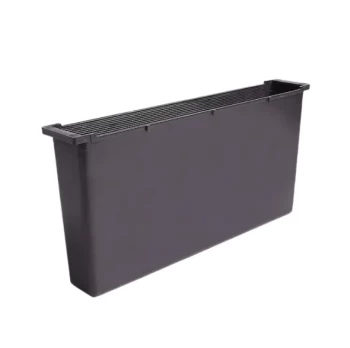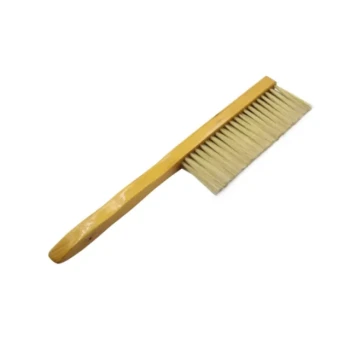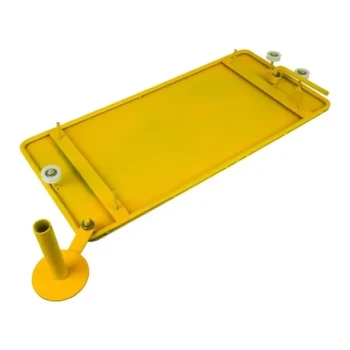In practice, top feeders offer significant advantages over gravity feeders primarily because they are easier to fill, less disruptive to the colony, and far less prone to leaking. Their large, open design allows for rapid refilling without spilling syrup, which helps prevent robbing, and their placement on top of the hive means you don't have to disturb the bees in the brood boxes below.
The central difference is one of reliability and convenience. Top feeders are designed for operational efficiency and hive stability, minimizing common issues like leaks and disruption that frequently plague gravity-style feeders.
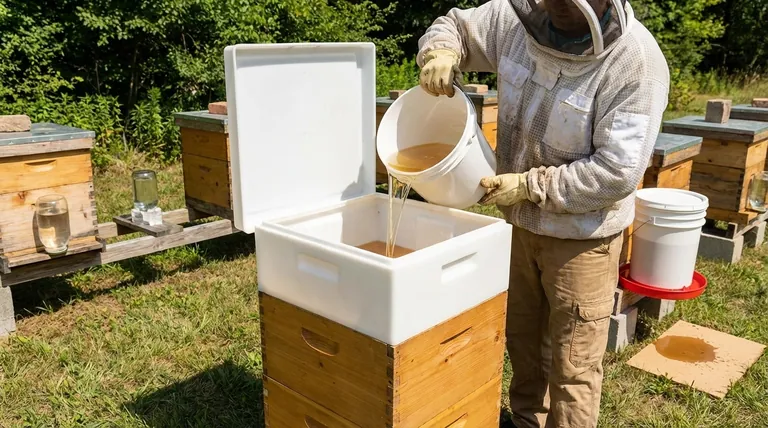
The Core Advantages of Top Feeders
A top feeder, also known as a hive-top feeder, sits directly on top of the uppermost hive box, just under the outer cover. This position and design create several distinct benefits for the beekeeper.
Ease and Speed of Refilling
The wide, open basin of a top feeder makes it exceptionally fast and simple to fill. You can pour syrup directly from a bucket without a funnel, significantly reducing the chance of spills.
Spilled syrup outside the hive can quickly attract pests and trigger robbing behavior from other colonies, so this clean refilling process is a key advantage for apiary health.
Minimal Hive Disturbance
To refill a top feeder, you only need to remove the telescoping outer cover and the inner cover. The brood chambers below remain sealed and undisturbed.
This is far less invasive than refilling internal frame feeders or adjusting gravity feeders, which can agitate the colony and expose the bees to the elements.
Large Syrup Capacity
Top feeders are designed to hold a large volume of syrup, often one to four gallons. This large capacity reduces the frequency of refills.
This is especially beneficial for beekeepers with distant apiaries or during periods of heavy feeding, such as late fall, when you want to minimize return trips.
Enhanced Bee Safety
While early designs sometimes posed a drowning risk, modern top feeders incorporate safety features like floats, ladders, or textured inner walls. These additions give bees a safe way to access the syrup and climb out, preventing unnecessary losses.
Understanding the Trade-offs
No single piece of equipment is perfect for every situation. The choice between a top feeder and a gravity feeder hinges on balancing convenience against potential risks.
The Problem with Leaks
Gravity feeders, such as entrance feeders or pail feeders, are notoriously prone to leaks. Changes in ambient temperature cause the air inside the feeder to expand and contract, breaking the vacuum seal and forcing syrup to drip out.
A leaky feeder wastes expensive syrup, can attract ants and wasps, and may even chill the brood if it drips into the hive. Top feeders, being simple open containers, are not susceptible to this problem.
Hive Access and Inspection
The primary trade-off with a top feeder is that it must be removed to perform a hive inspection. It sits between you and the frames.
A gravity feeder, particularly an entrance feeder, does not block access to the hive boxes. However, the convenience of access is often overshadowed by the risk of leaks and their smaller capacity.
Cleaning and Storage
The simple, open-box design of a top feeder makes it very easy to rinse out and dry completely for off-season storage.
Gravity feeders, with their small openings and enclosed designs, can be more difficult to clean thoroughly, potentially harboring mold or fermented syrup between uses.
Making the Right Choice for Your Apiary
Your specific goals and beekeeping style should guide your equipment choice.
- If your primary focus is convenience and minimizing hive disruption: A top feeder is the superior choice due to its quick, non-invasive refilling process.
- If your primary focus is preventing leaks and wasted syrup: Top feeders offer greater reliability and are not susceptible to the temperature-induced leaks that plague gravity feeders.
- If your primary focus is managing a large or distant apiary: The large capacity of a top feeder is ideal, as it reduces the frequency of refills and saves significant time and labor.
By understanding these fundamental differences, you can select the feeding system that best supports the health of your bees and the efficiency of your operation.
Summary Table:
| Advantage | Top Feeder | Gravity Feeder |
|---|---|---|
| Ease of Refilling | Fast, open-basin design | Slower, prone to spills |
| Hive Disturbance | Minimal (only remove outer cover) | High (disturbs brood boxes) |
| Leak Resistance | Highly resistant | Prone to temperature-induced leaks |
| Syrup Capacity | Large (1-4 gallons) | Smaller |
| Bee Safety | Modern designs prevent drowning | Varies by design |
Ready to upgrade your apiary's efficiency and bee safety?
As a trusted wholesale supplier to commercial apiaries and distributors, HONESTBEE provides durable, high-capacity top feeders designed for professional beekeeping. Our equipment minimizes hive disruption and eliminates common issues like leaks, saving you time and protecting your investment.
Contact our expert team today to discuss your bulk equipment needs and discover how our solutions can enhance your operation's productivity.
Visual Guide
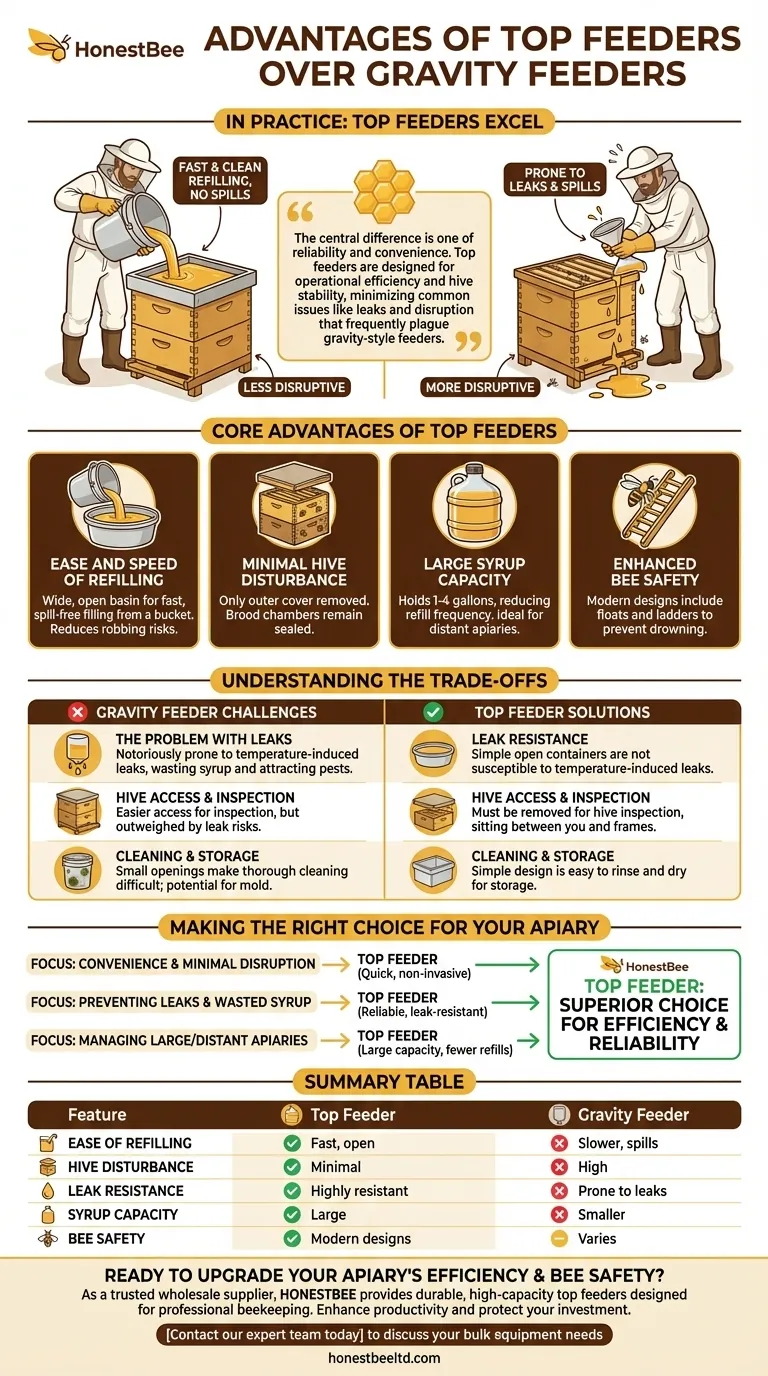
Related Products
- Classic Boardman Entrance Bee Feeder Hive Front Feeding Solution
- Professional Hive Top Bee Feeder for Beekeeping
- Professional Hive Front Entrance Bee Feeder
- Boardman Entrance Bee Feeder Durable Galvanized Steel and Wood Construction for Beekeeping
- HONESTBEE Professional Hive Top Bee Feeder Feeding Solution
People Also Ask
- How can a Boardman Feeder be used to provide water to bees? Avoid These Critical Risks to Your Hive
- How do you make an entrance feeder for bees? A Guide to Safe & Effective Hive Feeding
- What is a common problem with hive front feeders? Avoid Robbing Frenzies and Protect Your Hives
- How to make an entrance feeder for bees? A DIY Guide for Safe & Effective Feeding
- What types of bee feeders are available for beginners? Start with the Simple Entrance Feeder








